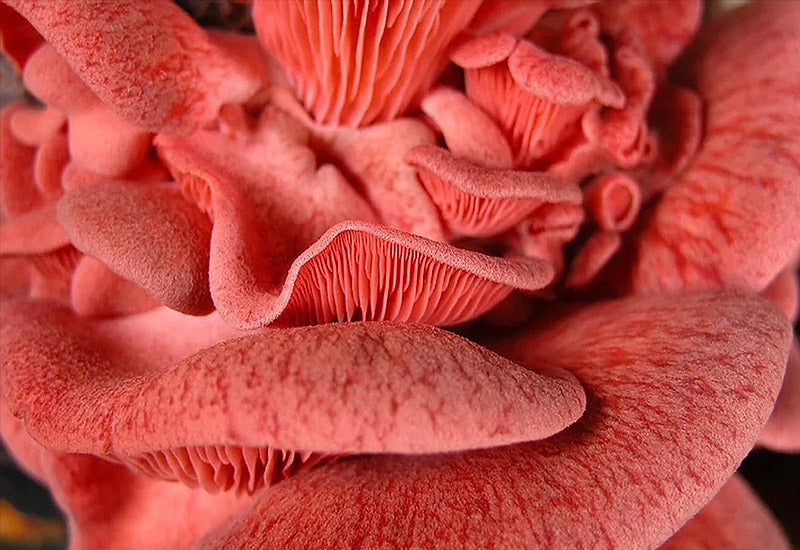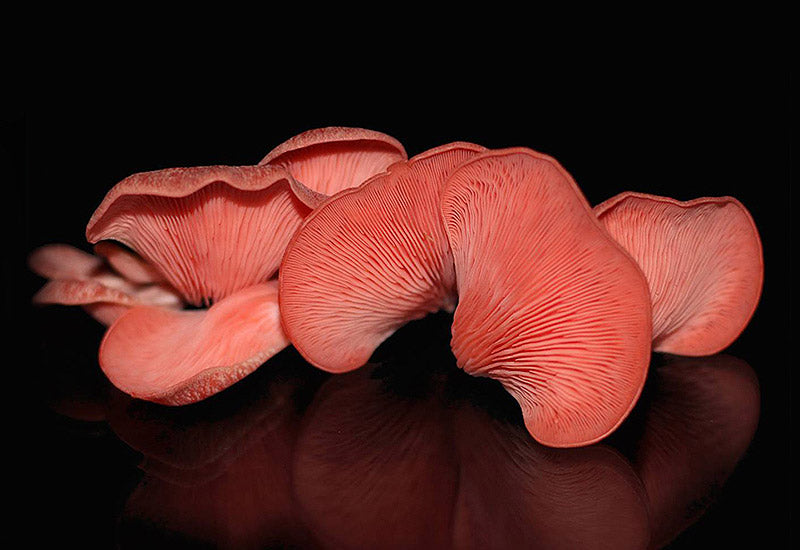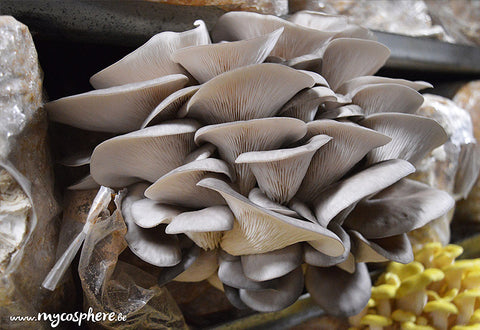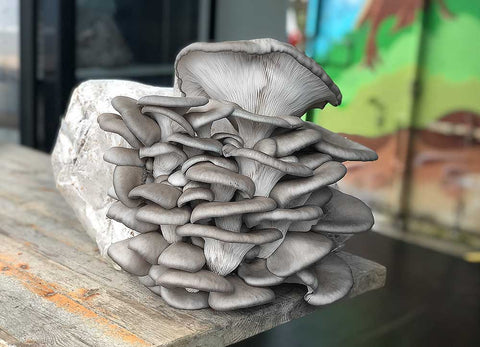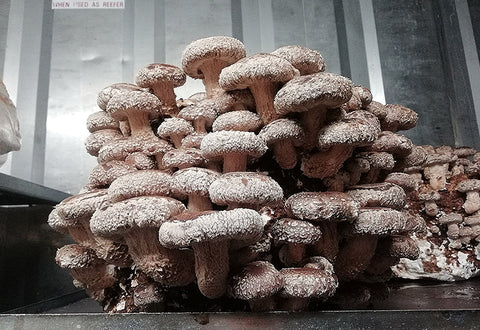Mycelium on organic Pink Oyster grain
-
+- 2 weeks. Consult all our deadlines
The Pink Oyster (Pleurotus salmoneostramineus) originates from Southeast Asia. This mushroom particularly enjoys warmth, with an ideal temperature of 25-30°C. It is therefore mainly cultivated in summer in European countries. Avoid prolonged cold periods that can harm the mycelium.
🎨 The fruit colors, ranging from light pink to dark pink, are beautiful and the cultivation is relatively easy. This variety is robust and resistant to contamination.
❄️ Mycelium preservation: 2-4 weeks. Unlike other pink oyster varieties, this one can withstand temperatures up to 4°C. Ideally, store it at 6-8°C and use it quickly.
👉 See also: How to use our myceliums
Our quality commitment:
We produce our myceliums under laboratory conditions, which guarantees purity of strains and optimal quality.
We produce our mycelia 100% organically and all our products are certified "BE-BIO-01, Agriculture Belgium" by CERTISYS.

🌱 Growing conditions
Pink oyster mushrooms need more warmth than other oyster varieties. They grow well between 20 and 30°C. Maintain high humidity at the start of fruiting and avoid drafts as well as cool temperatures. Their beautiful pink color develops better with high light levels.
🛠️ Substrates
For indoor cultivation: Use pasteurized straw, pasteurized wood chips, or other lignocellulosic materials.
We recommend our organic straw pellets which work particularly well with oyster mushrooms, simply adding 1 teaspoon of lime and 2 liters of cold water per kilo of pellets.
Our wood sawdust-based substrate adapted to lignicolous varieties will also work very well.
📊 Cultivation parameters
Inoculation: 5-10% grains/wet substrate
| Phase | Temperature | Duration | Moisture | Light | CO2 | Fresh air |
|---|---|---|---|---|---|---|
| Incubation | 24-30°C | 7-15 days. Colonization is much faster on straw than on sawdust. | - | n/a | n/a | n/a |
| Primordia initiation | 18-25°C | 2-4 days | 95-100% | 1000-2000 lux | 500-1000 ppm | 5 to 8 volumes/h |
| Fruiting | 20-30°C | 3-5 days, depending on the temperatures | 85-90% | 750-1500 lux | 500-1500 ppm | 5 to 8 volumes/h |
📚 This data comes from the book "Growing Gourmet and Medicinal Mushrooms" by P. Stamets. It is provided for informational purposes only, as each mushroom grower has specific cultivation conditions, so individual variations may occur.
📈 Productivity
Average harvest of 150-250 g of fresh mushrooms per 1 kg of wet substrate, over 2 to 3 harvests.

